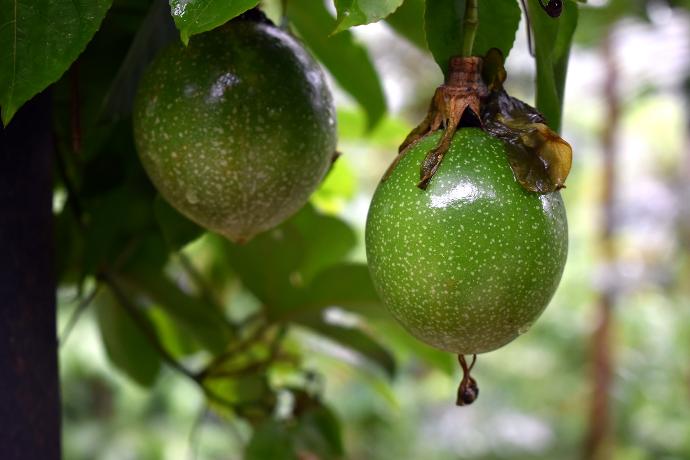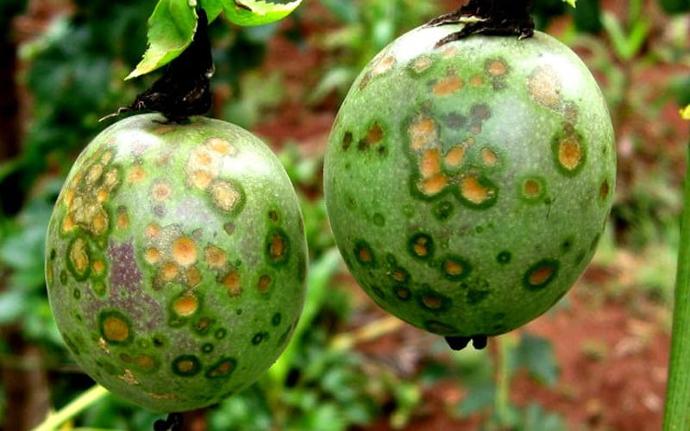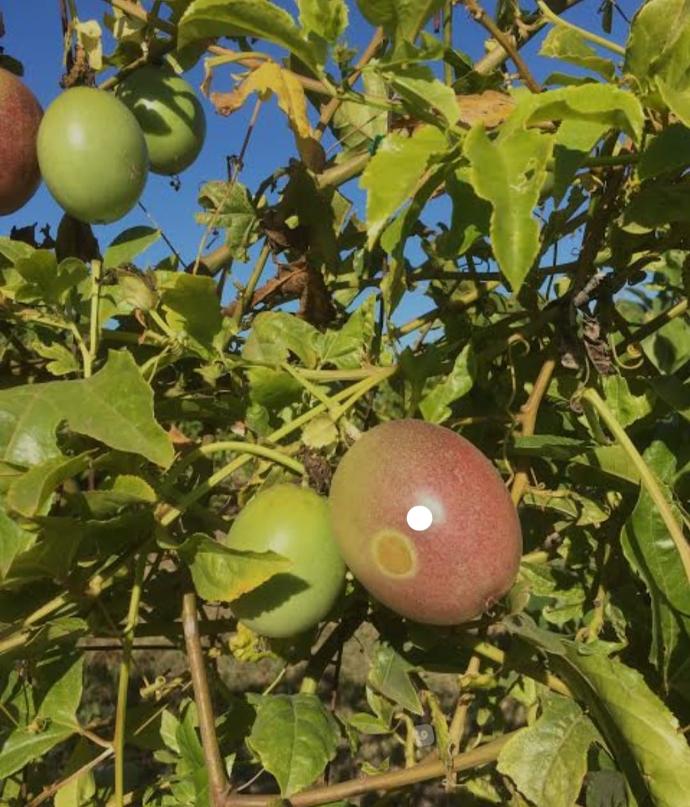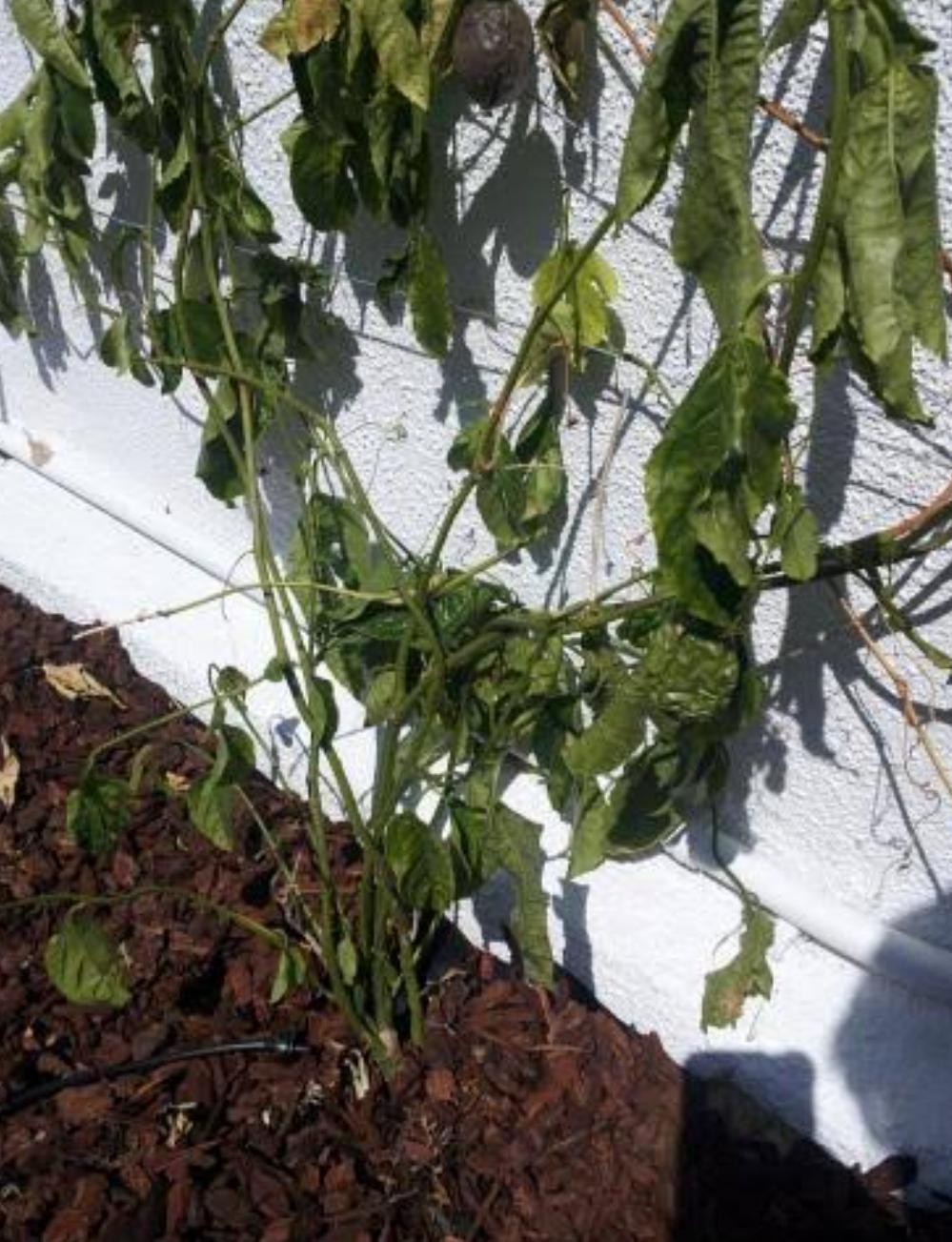Passion Fruit
Passion fruit vines, 10-20 feet in height and thriving in Zones 9-11, grow rapidly in well-drained soil and full sun. Known for their unique and edible fruits, passion fruits add a tropical touch to gardens.

Habit
Vine
Height
3-6 m
Growth
Fast
Soil
Well-drained, sandy loam
Shade
Full Sun to partial shade
Moisture
Medium
Edible
Yes
Medicinal
Yes
Origin
South America
Climatic Condition
Tropical, Subtropical
Temperature (°)
20-30°C
Humidity (%)
60-70%
Potting media
Loamy, peat
Fertilizers
Balanced NPK (10-10-10)
Watering
Regular, moderate
Plant Weight
1-2 kg
Flowering Time
Spring, Summer
Soil Ph level
5.5 - 7.0
Water Ph level
6.0 - 7.5
Soil EC
1-2 dS/m
Yield Per Plant
3 - 6 kgs/plant
NPK ratio
10:10:10
life Span
Perennial
Health Benefits
Rich in vitamins, aids digestion, improves skin health
Suggested Grow Media or Potting Mix ?
50% loamy soil, 30% compost, 20% sand
Suggested Fertigation/Fertilizers
Fertilize every 6 weeks with a balanced, slow-release fertilizer.
Common Diseases and Remedies
Fusarium Wilt, Brown Spot, Anthracnose, Passion Fruit Woodiness Virus, Root Rot.
Wilting, yellowing leaves, vascular discoloration, Brown spots on leaves and fruit, Dark sunken spots on leaves and fruit, Mosaic pattern on leaves, distorted fruit Yellowing leaves, root decay
Remove infected plants, improve soil drainage Remove infected plant parts, copper fungicide Remove infected plant parts, copper fungicide Remove infected plants, control insect vectors Improve soil drainage, avoid overwatering
HEALTH BENEFITS
· Rich in vitamins A and C, boosting immunity and skin health.
· High in dietary fiber, aiding digestion.
· Contains antioxidants that support heart health.
· Helps regulate blood sugar levels.
What Is A Passion Fruit ?
Passion fruit plants produce round or oval fruits with dark purple or yellow skin, orange flesh, and dark brown to black seeds. In India, passion fruit is known as Krishna Phal.

What Are The Different Types of Passion fruit ?
1. Purple Passion Fruit:-
This variety has nearly black, round or egg-shaped fruits. The seeds are black, low in acidity, and have a strong aroma and taste.
2.Yellow Passion Fruit:-
This variety has brown seeds, is juicy, and has a high yield. More resistant to soil-borne pests and diseases. The bright yellow variety, also called golden passion fruit, has smooth, shiny skin that is light and airy.
3.Giant granadilla:-
A climbing plant in the passionflower family, it is widely considered to be the world's largest passion fruit plant.
4.Granadilla:-
The fruit is sweet and passion fruit has a sour taste. .
5.Hybrid Kaveri Passion Fruit:-
It is the highest yielding variety compared to purple and yellow passion fruits.

How do you care for passion fruit plants?
1.Location:-
Passion fruit plants grow best in temperate, humid tropical, and subtropical climates.
2.Sunshine:-
Passion fruit plants require at least 6 to 8 hours of direct sunlight per day. It tolerates partial shade, but prefers full sun.
3.Soil:-
Plant passion fruit in moist, well-drained, slightly acidic soil rich in compost.
4.Hydration:-
Water your passion fruit plant regularly. Be especially careful when the seedlings are young, flowering, or fruiting. Give it plenty of water, but don't let the leaves get wet.

5.Nourshiment:-
Feed passion fruit plants twice a year, in the spring and fall, with well-moistened citrus food or chicken manure.
6.Issues:-
A soil-borne disease that attacks the root system of plants. A fungal disease that slightly reduces the growth of above-ground plants. Passion fruit woody virus or alfalfa mosaic virus.
What are the benefits of the passion fruit plant?
Passion fruit is rich in this antioxidant. The body uses it to form blood vessels, cartilage, muscles, and collagen, and to keep your skin youthful. It also helps the body heal, reduces inflammation and protects cells from damage.

FAQ's About Growing Passion Fruit
1. When does it bear fruit?
Passion fruit vines take 5 to 18 months to bear fruit, but usually they bear fruit within a year. It is not frost tolerant and grows well in warm climates.
2. How to plant passion fruit?
Spring is the best time to plant vines. That way, the vines can grow in warm conditions and protect themselves during the cooler months.
3. How does passion fruit grow?
Passion fruit plants can grow in almost any type of soil, but the soil must be well-drained, fertile, and organic. Rapid growth requires support.
4. How much water does passion fruit need?
Passion fruit requires a lot of water, especially in inland areas. Keep the soil moist but not wet. Not suitable for flooded soil.
5. How to fertilize passion fruit?
Use potassium-rich fertilizers to promote fruit production. Fertilize passion fruit with potassium-rich fertilizer in spring and summer.



